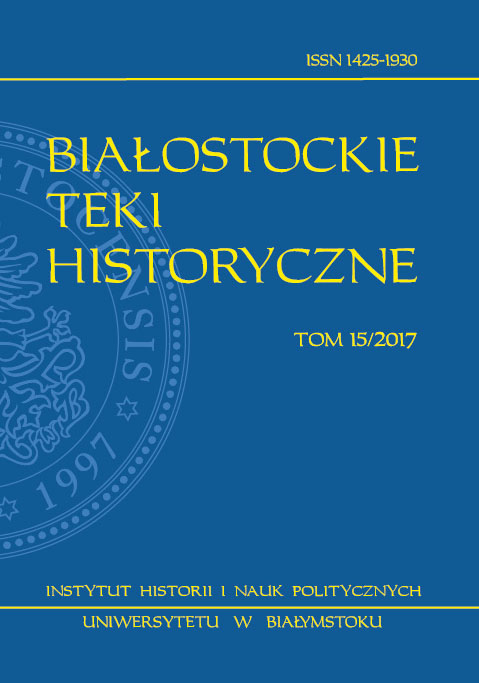Lithuanians in the United States at the turn of the 19th and 20th centuries
Lithuanians in the United States at the turn of the 19th and 20th centuries
Author(s): Piotr SzlaużysSubject(s): History, Social history, Recent History (1900 till today), 19th Century
Published by: Wydawnictwo Uniwersytetu w Białymstoku
Keywords: Lithuanian; American; Russian; immigrants; homeland
Summary/Abstract: At the turn of the 19th and 20th centuries, the United States was one of the most popular destinations for emigrants from the Lithuanian territories in the Russian Empire. They emigrated because they had no economic, social, or political perspectives in their homeland, which was part of the Russian Empire and the German Reich until 1918, when Lithuania proclaimed to be independent. The Lithuanians living in the Russian Empire were subjected to persecution as they were forbidden to speak their mother tongue or learn about their native history or culture. Moreover, they could not afford to buy land and were left landless and jobless mainly because of the unfavorable Russian policy to russify and economically exploit the areas controlled by the Tsar. In the pre-World War I period, the United States was a favourable country for Lithuanian emigrants because they could enjoy economic, social, and political freedom in that country. They could earn enough money to support their families left behind in their homeland, which often followed their relatives or friends living in the new land. It was much easier for them to find a job in the United States, where the Industrial Revolution created a massive demand for new workers. Lithuanian Americans lived next to other ethnic communities, which could unrestrictedly speak their native language, profess their own religion, learn about their history, establish their own political organisations, as well as issue their own newspapers or books. Such freedom encouraged American Lithuanians to integrate within their own community and to take advantage of opportunities they had never had in their homeland. As the United States was such an attractive place for the newcomers, the number of Lithuanians leaving the Russian Empire increased sharply. This was possible mainly because new railway lines were built in the Russian Empire, including the Lithuanian areas. Such routes led to ports in Germany, from where the emigrants sailed to the United States. Before World War I, hundreds of thousands of Lithuanian emigrants arrived in the United States to start their new lives. It must be said that Lithuanian Americans were successful as an ethnic community in the United States. They were strongly integrated. They cultivated their cultural values and sent money to their families in the United States and their relatives living in the Russian Empire. Lithuanian Americans established their own political organisations, which lobbied the US government as well as other political and economic organisations to support an independent Lithuania, contributed to the establishment of a Lithuanian mission in Washington D.C. and recognition of Lithuania by the US government as an independent state on 28 July 1922. The economic and social perspectives in the United Stated encouraged most Lithuanian emigrants to stay in the United States permanently, even when Lithuania became independent in 1918, and its inhabitants were no longer persecuted because of their ethnic origin.
Journal: Białostockie Teki Historyczne
- Issue Year: 2017
- Issue No: 15
- Page Range: 119-139
- Page Count: 21
- Language: English

